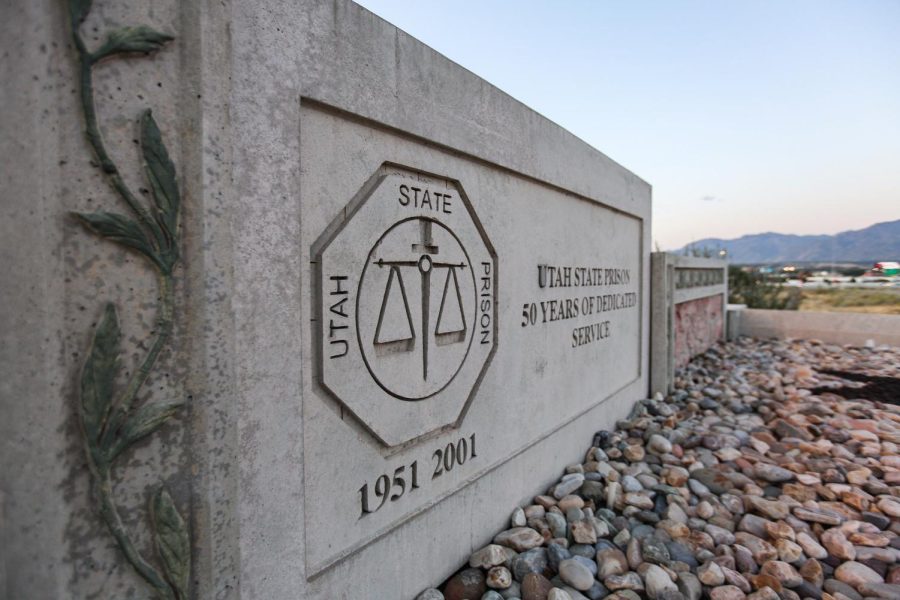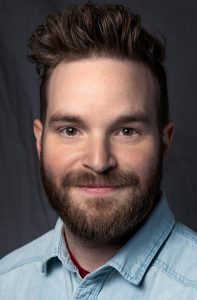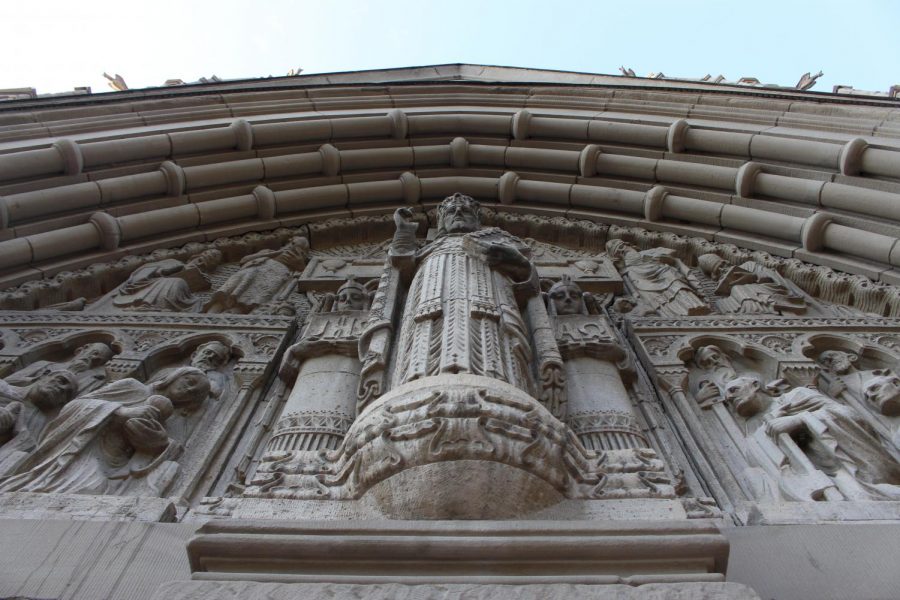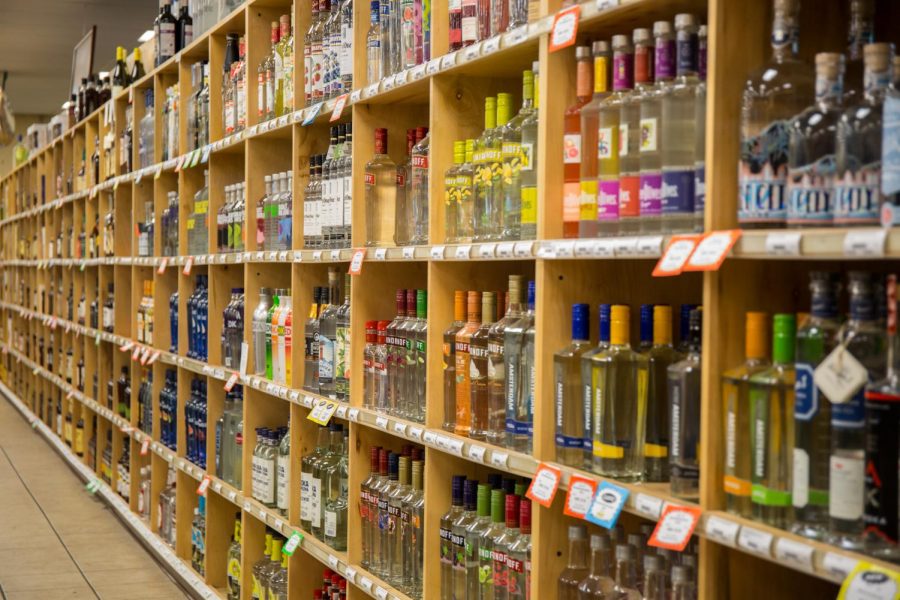Lezaic: You Need to Know About Prison Gerrymandering
The front gate of the Utah State Prison in Draper, Utah on Sept. 19, 2018. (Photo by Justin Prather | The Daily Utah Chronicle)
January 12, 2023
The results of the midterm elections, while disappointing, were utterly unsurprising. As a seemingly immovable red state, the powers that be in Utah have many tricks up their sleeves to maintain the status quo. This includes gerrymandering, and more specifically, prison gerrymandering. With the surge of reports coming out against the new Utah State Correctional Facility, the time for addressing the vile implications of Utah’s prison placement is long overdue.
Defining Prison Gerrymandering
Prison gerrymandering is a heinous tactic utilized in redistricting that uses incarcerated people to boost voting power in predominantly white rural areas. These areas typically have small populations and staunchly right-wing voting tendencies. In the same stroke, this form of gerrymandering takes away voting power from urban areas more highly populated by communities of color. Particularly relevant to Utah, this affects the “Indigenous people who live on tribal lands that are already at the greatest risk of being undercounted by the census, so losing additional residents to prison gerrymandering can especially hurt these communities,” said Dr. Katie Durante, assistant professor at the U.
Prison justice advocates have rightly called prison gerrymandering the modern version of the Three-Fifths Compromise, which counted enslaved people as a fraction of a person in order to boost white enslavers’ representation. And in the last 40 years, we’ve seen the racist policies of the War on Drugs cause incarceration rates to explode and disproportionately incarcerate people of color.
Prison gerrymandering around the country has had serious impacts on the representation of marginalized communities, such as urban areas in Texas losing seats in the state house. Prisons drain people, power and resources from vulnerable communities and give all the benefits to areas that already tout excessive political power. Counties will go so far as to bid for prisons to be built in their area in order to gain representation.
Mass incarceration is a racial issue and has always targeted Black, Brown and Indigenous communities and individuals. Not only does incarceration take away their right to vote, but it hurts their whole communities while actively benefiting white constituents.
Utah Incarceration and Gerrymandering
Utah is a heavily gerrymandered state, and despite efforts to draw a more fair map in 2020, business continues as usual. This corruption is reflected in the placement of Utah’s prisons.
After the 2000 Census, for instance, the Utah State Prison made up 12% of the 41st district’s population, giving residents in Draper, a city where the vast majority of the population is white and conservative, a political advantage that has not changed since. The Draper prison conveniently timed its relocation for this summer, after the 2020 Census already counted its incarcerated people.
As of 2021, Draper’s population is 85% white. Yet its prison, the largest of Utah’s two state correctional facilities, has closely followed the national trend of the overrepresentation of Black, Latino and Indigenous incarcerated people. Dr. Durante confirms this. “In Utah, Black people make up only about 1% of the state population but about 7% of the inmate population. Similar disparities exist for Latinos, who make up 13% of the state population but 20% of the inmate population, and Indigenous people who make up 1% of the state population but 5% of the inmate population. Members of these groups tend to live in urban areas — in the case of Indigenous people, tribal lands as well — where the residents vote differently from rural white districts,” she said.
Meanwhile, white people are underrepresented in Utah’s prisons. So even though the incarcerated people there have been relocated to Salt Lake City en masse, their population is still being counted in Draper until 2030.
The state is only now moving the prison to swampland to make room for wealthy land developers and the Silicon Slopes boom while mosquitoes eat the incarcerated people alive. As the population in Utah County sees the biggest spike of 16 years, it’s difficult to not suspect local politicians of banking on gentrifying opportunists as their new source of political power.
Solutions
Although the Census Bureau ignored calls for change, people are still speaking up about the issue and demanding that the Bureau change its standards for counting residency. While change may not happen at the federal level, states can still decide on their own how to count their populations.
Only two states — Vermont and Maine — allow all incarcerated people to vote, though this is likely because the majority of their incarcerated populations are white and counted as part of their original residential districts. Only 12 states have passed prison gerrymandering reform with varying conditions, and the states with the highest incarceration rates are not among those.
Utah needs to end prison gerrymandering and allow incarcerated people to vote. As we gear up for this year’s legislative session, contact your legislators about creating and passing a bill to end prison gerrymandering. Incarceration is inhumane, punitive and cruel. Prison cells are not homes and they shouldn’t be treated as residency. And despite prisons’ active efforts to cut incarcerated people off from their communities, family and friends often visit to maintain connections. Incarcerated individuals still have a strong tie to their actual areas of residence, and the census should reflect that.
As we face an onslaught of deadly legislation and an increasingly obvious strain of fascism, we must do everything in our power to empower our disenfranchised community members. To learn more, follow organizations like Decarcerate Utah and the Utah Prisoner Advocate Network.














Alber Cramer • Jan 16, 2023 at 6:33 pm
Consider the question: when an attorney lies to a judge or withholds evidence is it a crime? If not why not, if so who investigates and prosecutes? There are those in prison who are there because of the behavior of attorneys not their own.